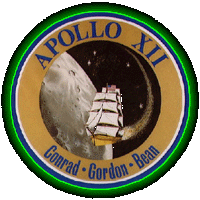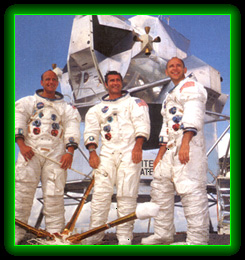 | Launch: 11/14/69, 11:22 a.m EST Landing (Moon): 11/19/69 Lunar Location: Ocean of Storms Landing (Earth): 11/24/69, 3:58 p.m. EST Duration: 10 days, 4 hrs, 36 min Orbits (Moon): 45 (3 days, 17 hrs, 2 min) Surface time: 1 day, 7 hrs, 31 min |
The primary objectives of Apollo 12 were:
| |
 As the cold rain drenched the spectators, Commander Pete Conrad noticed
water leaking between the boost protective cover and the spacecraft. He later
recalled, "I could see water on my two windows, Window 1 and 2. We experienced
varying amounts passing across these windows, dependent on how heavily it was
raining." The Apollo spacecraft was designed to be launched during rain, and as
a Captain in the Navy, Pete Conrad had said that he was ready to do NASA's "all
weather" testing. It didn't take long after launch for him to almost regret
those thoughts. As the cold rain drenched the spectators, Commander Pete Conrad noticed
water leaking between the boost protective cover and the spacecraft. He later
recalled, "I could see water on my two windows, Window 1 and 2. We experienced
varying amounts passing across these windows, dependent on how heavily it was
raining." The Apollo spacecraft was designed to be launched during rain, and as
a Captain in the Navy, Pete Conrad had said that he was ready to do NASA's "all
weather" testing. It didn't take long after launch for him to almost regret
those thoughts. |
| - Click for printable version - | Click here to go to the Apollo XII photo section |
 | Page: 1 2 3 4 5 6 7 8 |